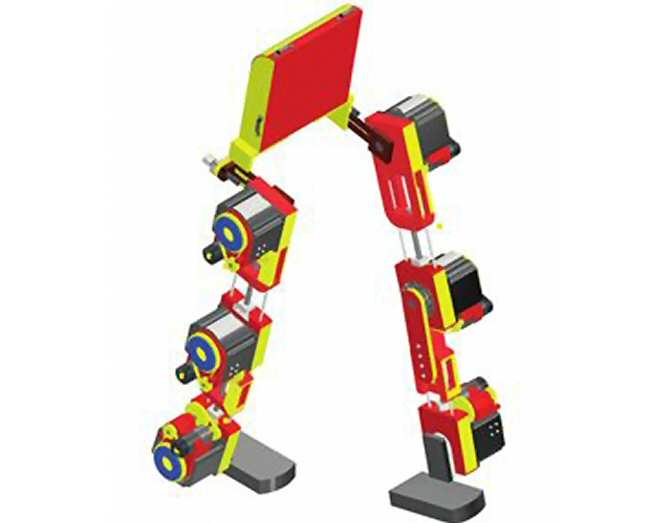Duchenne Muscular Dystrophy (DMD) is a disease affecting nearly 5 in 100,000 male children. As it is an X-chromosome-linked disease, it predominantly affects boys. This condition is characterized by muscle weakness, fatigue, instability while walking, and cardiac and respiratory complications, especially in adulthood. These features lead to the confinement of children to wheelchairs from a very early age. As DMD is considered an incurable disease, efforts focus on preserving the patient’s autonomy for as long as possible. In this regard, physical therapy is the best tool to slow down muscle deterioration.
In response to the lack of suitable technological tools for physical therapy in DMD patients, researchers from the Polytechnic University of Madrid (UPM) in Spain and the University of San Buenaventura (USB) in Colombia have developed the mechanical, electronic, and control systems design of a robotic exoskeleton. This technology aims to support medical personnel in executing therapy processes with less physical fatigue, greater repeatability, and better patient progress assessment.
To design the engineering of the robotic exoskeleton and study its performance, the researchers used a hybrid dynamic-mathematical model of the exoskeleton and a child’s body based on the anthropometry of a population of six-year-old children. Numerical simulations validated the system’s performance and robustness. According to Álvaro Gutiérrez and Jaime Arcos-Legarda, researchers from the ETSI of Telecommunication at UPM involved in the study, “this exoskeleton is conceived as an assistance tool for medical personnel, who are ultimately responsible for supervising and adjusting movement routines to meet rehabilitation objectives.”
Future research will focus on the clinical evaluation of the exoskeleton, which will provide evidence of the positive impact that using this technology can have on the quality of life of children with Duchenne Muscular Dystrophy.

Gutiérrez, Arcos-Legarda, and their colleagues present the technical details of their new robotic exoskeleton in the academic journal Applied Sciences, under the title “Mechatronics Design of a Gait-Assistance Exoskeleton for Therapy of Children with Duchenne Muscular Dystrophy.”

